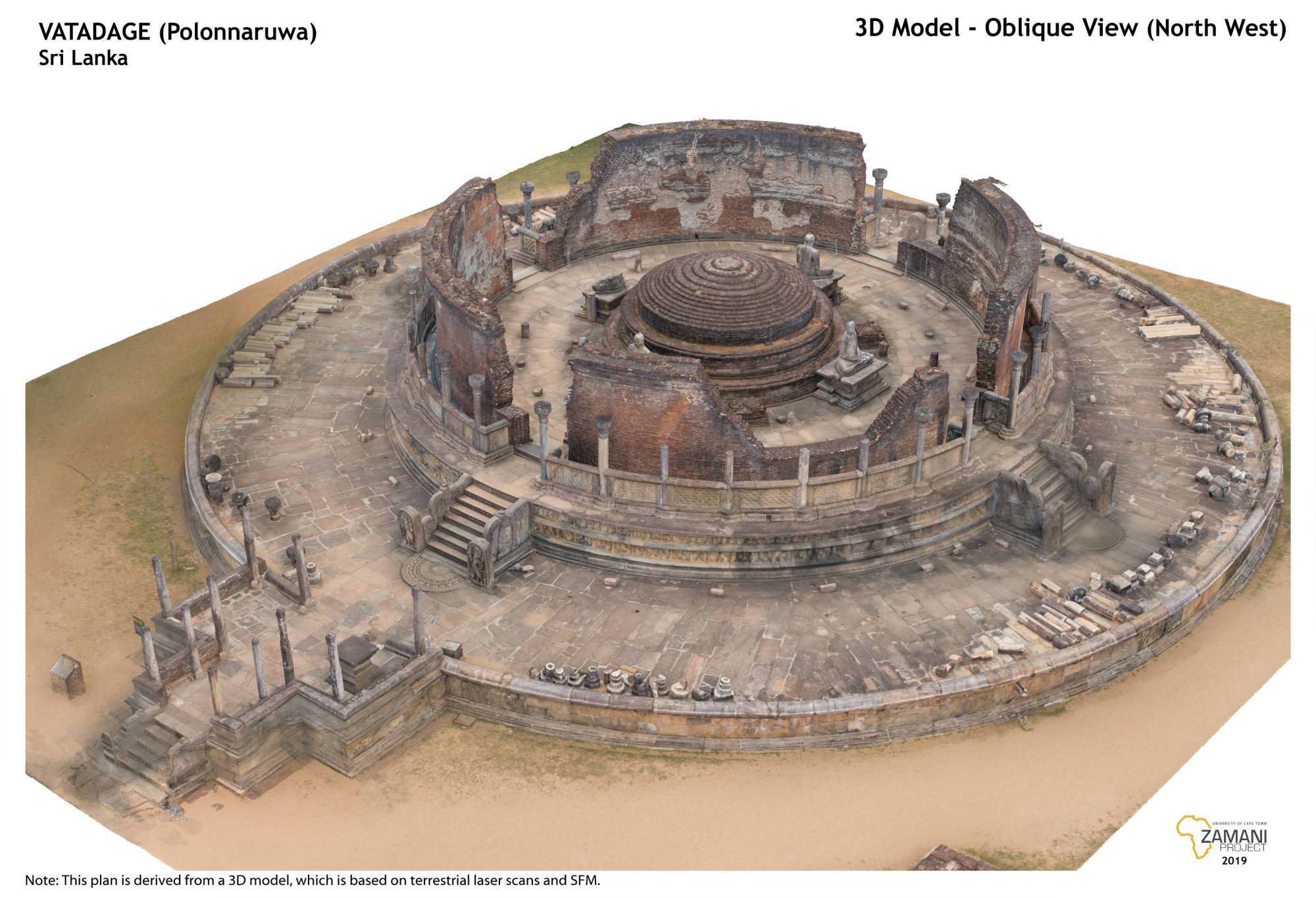Polonnaruwa Vatadageya
The Polonnaruwa Vatadage is an ancient structure dating back to the Kingdom of Polonnaruwa of Sri Lanka.Polonnaruwa Vatadage is a well-preserved Vatadage in the famous Dalada Maluwa quadrangle of the ancient city of ruins, Polonnaruwa. Vatadages are typical Buddhist structures found in Sri Lanka. These are circular, constructed using stone and brick with intricate stone carvings and a wooden roof. They were built to protect stupas. Currently, there are ten Vatadages in Sri Lanka, and the most popular one is Polonnaruwa Vatadage.
This structure is built in Buddulakara or bubble-shaped design and is the perfect example of a typical Sri Lankan Vatadage. The upper part of the structure has been destroyed; only the lower part remains. Many theories revolve around the construction of this monument, but most historians agree with the hypothesis that it was built by Parakramabahu I in the 12th century. The Vatadage was initially constructed to protect the tooth relic of Buddha and his ten commandments. Buddhists believe that Buddha’s left canine remained even after his cremation, and the country has preserved this relic as their prized possession. This tooth, which was the reason for the construction of Polonnaruwa Vatadage, is now placed in the Temple of Kandy.
The Vatadage protects a small stupa of 8 inches. The structure has two platforms – an upper platform and a lower one. The lower platform is 120 feet in diameter and 4 feet in height, while the top platform is 80 feet in diameter and 5 feet in height. The centre of the top platform has four Buddhist statues in dhyana mudra in a sitting position. The four figures are 5 feet tall and face the four cardinal directions. This architecture makes the Vatadage a very typical one, with a charm of its own. The structure and its surroundings emit positivity and are extremely inviting for tourists.
Polonnaruwa Vatadage Old Photos



Polonnaruwa Vatadage New Photos



Popular Tourist Attractions Ticket prices